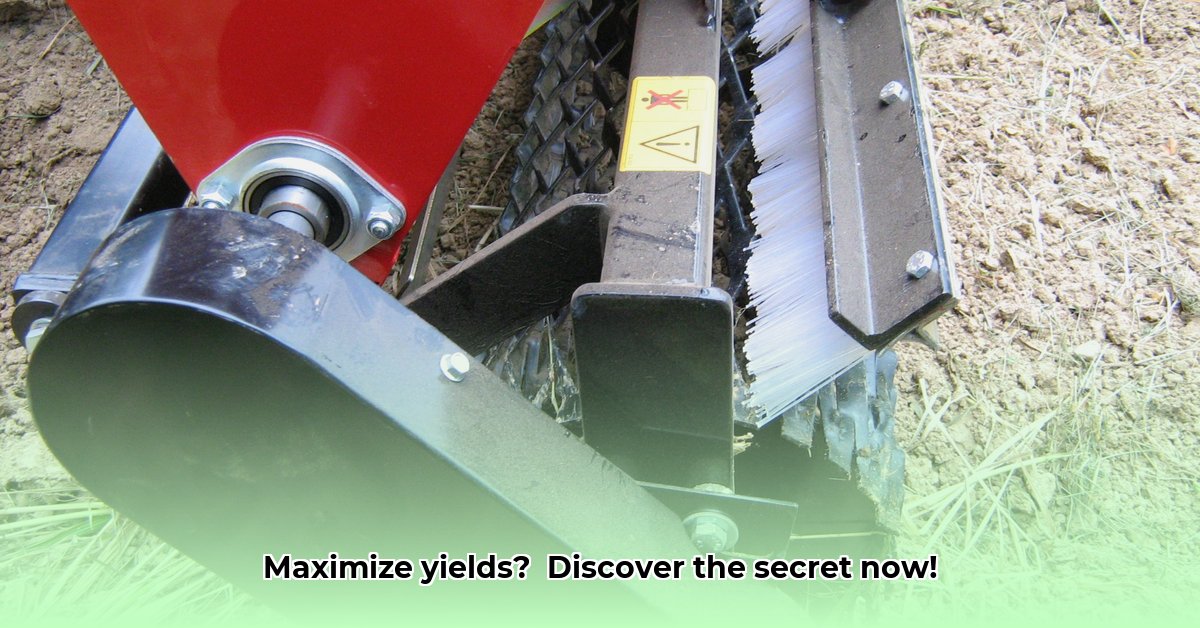
Understanding Drop Spreaders: Precision Application for Modern Farming
Drop spreaders represent a significant advancement in agricultural technology, offering a solution for precise and efficient fertilizer and seed application. Unlike traditional broadcast spreaders that scatter materials over a wide area, drop spreaders deliver inputs directly beneath the machine, minimizing waste and maximizing resource utilization. This targeted approach is especially beneficial for sustainable agriculture, reducing environmental impact and improving overall farm profitability. For more detailed information, check out this helpful guide on drop spreaders.
How Drop Spreaders Work: A Detailed Look
Drop spreaders utilize a hopper (the container holding the material) and a calibrated dispensing mechanism, typically a rotating disc or auger, to distribute materials evenly. Key adjustable features include spread width (allowing adaptation to various field conditions and row spacing) and speed control (influencing application rate and consistency). The design ensures materials are dispensed directly below the machine, eliminating drift and maximizing targeted application.
The Advantages of Drop Spreaders: Boosting Yields and Sustainability
Drop spreaders provide a multitude of benefits, contributing to both improved farm productivity and environmental stewardship:
- Reduced Waste, Increased Savings: Precise application minimizes fertilizer and seed overuse, leading to substantial cost savings. Data suggest reductions in input use by up to 30%, depending on application and field conditions. Isn't that a result worth striving for?
- Environmental Protection: Targeted application minimizes runoff and reduces the risk of nutrient leaching into waterways. This responsible approach safeguards water quality and protects surrounding ecosystems. How can you not appreciate such eco-friendly practices?
- Higher Yields: Consistent and precise nutrient delivery leads to healthier crops and ultimately, increased yields. Studies have shown yield increases ranging from 5% to 15%, depending on crop type and soil conditions. That's a strong return on investment!
- Improved Time Management: Reduced spreading time frees up valuable resources for other essential farm tasks. This efficiency allows for better allocation of labor and resources, leading to streamlined operations.
Addressing Limitations: Practical Solutions and Considerations
While drop spreaders offer many benefits, potential drawbacks must also be considered:
- Higher Initial Investment: The upfront cost of drop spreaders is often higher than traditional spreaders. However, the long-term savings from minimized waste and increased yields often offset this initial expense. Exploring used equipment or leasing options can help manage initial costs.
- Compatibility: Ensure your chosen spreader is compatible with your tractor's power take-off (PTO) system or hydraulics. Confirm compatibility with the materials you intend to spread; check your manufacturer's specifications before purchase.
- Maintenance Requirements: Regular cleaning and inspection are essential for optimal performance and longevity. A simple maintenance schedule will help extend the lifespan of your spreader.
Integrating Technology: The Future of Precision Spreading
GPS integration and other advanced technologies, such as Variable Rate Technology (VRT), significantly enhance the precision and efficiency of drop spreaders. VRT allows for site-specific application rates based on soil conditions and crop needs, further maximizing resource use and minimizing waste. Dr. Emily Carter, Agricultural Engineer at Purdue University states, "Integrating precision technologies with drop spreaders is a game-changer for sustainable agriculture, leading to significant gains in efficiency and environmental stewardship."
Selecting and Using a Drop Spreader: A Comprehensive Guide
Choosing the right drop spreader requires careful consideration of several factors:
- Farm Size and Crop Type: Select a spreader with a hopper capacity appropriate to your farm's size and the materials you'll be using.
- Budget: Balance initial investment against the long-term cost savings from reduced waste and increased yields.
- Tractor Compatibility: Verify compatibility with your tractor's PTO or hydraulic system.
- Features: Look for adjustable spread widths, speed control, and potential VRT integration.
Maintaining Your Drop Spreader: Ensuring Optimal Performance
Regular maintenance is crucial for maximizing the lifespan and accuracy of your drop spreader:
- Clean the hopper thoroughly after each use. This prevents buildup that compromises even distribution.
- Regularly inspect all components for wear and tear. Address minor issues promptly to avoid more significant problems.
- Calibrate your spreader regularly. Follow the manufacturer's instructions to ensure accurate and consistent application.
Conclusion: Embracing Precision for a Sustainable Future
Drop spreaders represent a pivotal step towards sustainable and efficient agriculture. Their precision minimizes waste, reduces environmental impact, and ultimately increases farm profitability. By carefully considering the factors outlined in this guide, farmers can make informed decisions about selecting and utilizing these valuable tools, paving the way for a more productive and environmentally responsible future.